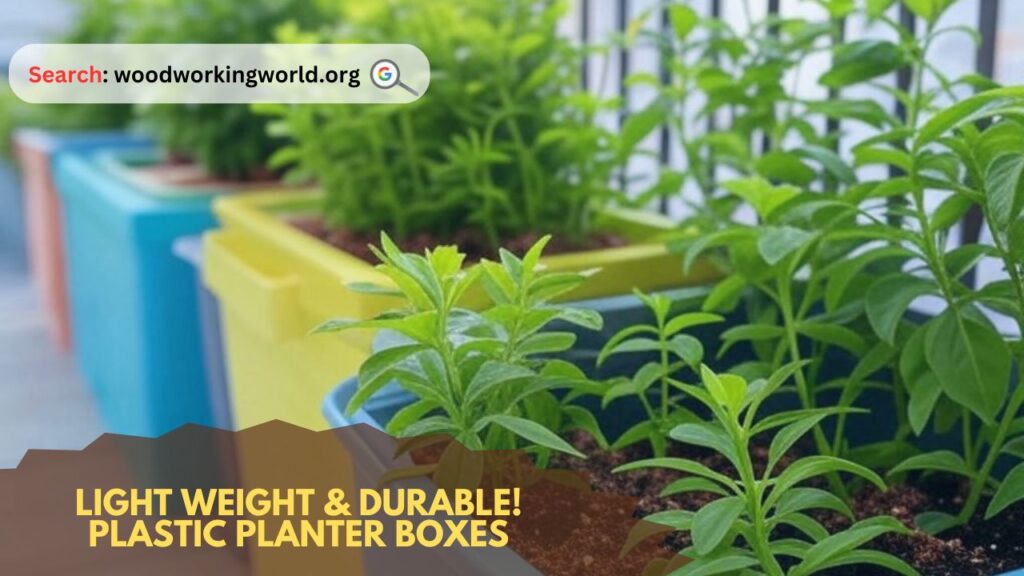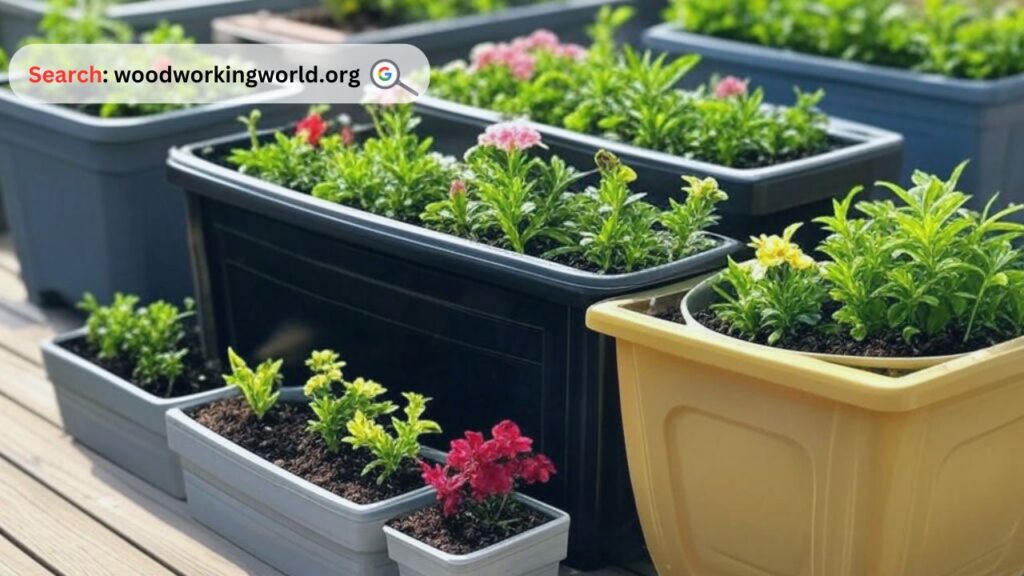Light weight & durable plastic planter boxes are perfect for any space! Discover stylish, weather-resistant options for your garden, patio, or indoor plants.
Gardening enthusiasts, homeowners, and urban gardeners are always on the lookout for durable, lightweight, and stylish planters that enhance their green spaces. Plastic planter boxes have emerged as a popular choice due to their affordability, longevity, and design versatility. Unlike traditional materials such as clay, ceramic, or metal, plastic planters are easier to handle and offer a wide range of color and style options.

In this guide, we will explore everything you need to know about plastic planter boxes. From their advantages to a step-by-step guide on choosing the best one, as well as a comparison with other materials, we’ve got you covered.
Why Choose Plastic Planter Boxes?
1. Light weight and Easy to Move
One of the primary benefits of plastic planter boxes is their light weight nature. This makes them ideal for:
- Balcony gardening
- Rooftop gardens
- Indoor plant setups
- Frequent plant rearrangement
2. Durability and Longevity
Modern plastic planters are made from high-quality, UV-resistant materials that withstand extreme weather conditions, ensuring longevity without cracking or fading.
3. Cost-Effectiveness
Plastic planter boxes are significantly more affordable than ceramic or wooden alternatives. They provide an excellent balance between price and durability, making them a budget-friendly gardening option.
4. Variety in Design and Colors
Whether you prefer minimalist styles, bold colors, or intricate patterns, plastic planters come in a range of styles to suit any home decor.
5. Water Retention and Drainage
Unlike porous materials, plastic retains moisture efficiently, making it an excellent choice for plants that require consistent watering. Additionally, most plastic planters come with built-in drainage holes or allow for custom drainage modifications.
Build 16,000+ Projects with Step-by-Step Plans—No Big Workshop or Costly Tools Needed! Start Now!
Step-by-Step Guide to Choosing the Best Plastic Planter Box
Step 1: Determine the Right Size
- Small planters (6-10 inches): Ideal for herbs and small flowering plants.
- Medium planters (10-18 inches): Suitable for medium-sized plants like ferns and shrubs.
- Large planters (18+ inches): Perfect for larger plants, trees, and deep-rooted vegetables.
Step 2: Consider Drainage Options
Ensure that the planter has proper drainage holes to prevent root rot. If the planter lacks holes, consider drilling small ones at the base.
Step 3: Choose the Best Material Type
Plastic planters come in different materials, including:
- Polypropylene: Strong and resistant to cracking.
- Resin-based plastic: Mimics stone or ceramic but remains lightweight.
- Recycled plastic: An eco-friendly choice that supports sustainability.
Step 4: Pick a Style That Complements Your Space
Select a planter box design that enhances your indoor or outdoor setting. Options include:
- Classic rectangular planters
- Hanging plastic baskets
- Self-watering plastic pots
Step 5: Verify UV Resistance
If placing the planter outdoors, check for UV-resistant labels to ensure long-lasting color and durability under sunlight.
Expert tips on Woodworking 🌿📦 Watch now!

Comparison Table: Plastic vs. Other Planter Materials
| Feature | Plastic Planter Boxes | Ceramic Planters | Wooden Planters | Metal Planters |
|---|---|---|---|---|
| Weight | Light weight | Heavy | Moderate | Heavy |
| Durability | High (weatherproof) | Fragile | Moderate | Can rust |
| Cost | Affordable | Expensive | Moderate | Expensive |
| Water Retention | High | Low (porous) | Moderate | Low |
| Design Variety | Extensive | Limited | Moderate | Limited |
| Maintenance | Low | High | High | High |
Essential Tips for Using Plastic Planter Boxes
- Choose the Right Potting Mix: Use a high-quality mix to promote healthy plant growth.
- Monitor Watering: Plastic retains moisture well, so avoid overwatering.
- Enhance Drainage: Add a layer of pebbles at the bottom to prevent waterlogging.
- Protect from Heat: Although durable, extreme heat can sometimes cause warping; consider shading plants during hot summers.
Quote on Gardening
“To plant a garden is to believe in tomorrow.” – Audrey Hepburn
FAQs About Plastic Planter Boxes
Q1: Are plastic planter boxes safe for plants?
Yes, as long as they are BPA-free and designed for gardening purposes. Opt for high-quality plastic to avoid harmful chemicals leaching into the soil.
Q2: How do I clean plastic planters?
Wash with warm, soapy water and scrub gently with a brush. Rinse thoroughly before reusing.
Q3: Can plastic planter boxes be used outdoors?
Absolutely! Many plastic planters are UV-resistant and designed to withstand harsh outdoor conditions.
Q4: How can I make plastic planters look more decorative?
You can paint them, add decals, or place them inside decorative covers to enhance their aesthetic appeal.
Q5: Do plastic planter boxes degrade over time?
High-quality plastic planters last several years. However, prolonged sun exposure can cause some to fade or become brittle over time.

Conclusion
Plastic planter boxes are an excellent investment for gardeners seeking an affordable, durable, and versatile planting solution. Whether you’re creating an urban garden, decorating a balcony, or managing an outdoor landscape, plastic planters provide unmatched convenience and style. By selecting the right type, ensuring proper drainage, and following maintenance tips, you can enjoy lush greenery in a stylish and practical manner.
Click To Order Teds Woodworking With A 60-Money-back Guarantee From – Official Website